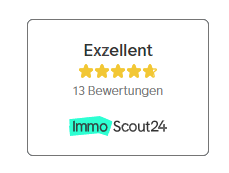Executive Overview
Their state guidelines that govern installment loans have received little attention in the last years. Bank cards, where state legislation is mostly preempted, will be the many extensive supply of small-dollar credit, additionally the federal-level reforms of 2009 eliminated lots of the credit that is abusive methods which had arisen. Into the subprime and deep subprime market, policymakers have actually centered on the harms of payday advances. Dangerous installment loans have actually flown beneath the radar, an industry this is certainly likely to develop as restrictions on pay day loans enhance and payday loan providers evolve to evade defenses.
The attention price caps along with other protections that state installment loan guidelines offer customers will consequently be of good value on the years that are coming. Do state installment loan legislation protect customers, or will gaps within the regulations supply a haven for high-cost loan providers? Regardless of if the interest rate is gloomier than for a loan that is payday an installment loan causes the maximum amount of or higher harm if this has a high price put on a more substantial quantity for a longer time period.
This report analyzes the skills and weaknesses of state legislation that regulate installment loans and comparable long term loans organized as open-end personal lines of credit. We survey the main element attributes of these legislation and evaluate the cost that is full in each state for 2 test loans, a six-month $500 loan and a two-year $2000 loan. To evaluate the price of these loans, we now have determined full percentage that is annual (“full APRs”) such as all charges.
Caps on interest levels and loan costs will be the main means in which state guidelines protect borrowers. Reasonable rates of interest align the passions of this loan provider additionally the debtor and supply a motivation in order to make loans that borrowers are able to repay. But state installment loan laws and regulations differ significantly as to whether they cap prices, and just how effective the price caps are with charges as well as other loopholes included.
Some state laws and regulations spot a basically reasonable restriction on the interest price, but additionally enable other loan fees such as for instance origination charges. These costs can considerably boost the APR that is full. The interest rate for a $500 loan at 36%, but also allows a $50 origination fee and a $20 documentation fee, bringing the full APR to 85% for example, Louisiana caps. Other states enable the ruse of a cost paid up to a broker—a credit services company (CSO)—on top regarding the purported loan price. For instance, limitless CSO charges make Ohio’s limitations on loan costs illusory.
For the $500 installment that is closed-end, with all costs included:
- The full APR is 16% to 36% in 19 states and the District of Columbia
- 13 states enable interest and costs that will bring the full APR because high as 54%, 10 states enable costs that will possibly bring the entire APR for the $500 loan as much as between 61per cent and 116%,
- 4 states place no limit regarding the interest except it is not unconscionable–so one-sided so it shocks the conscience, and
- 4 states do not have price ban or cap on unconscionability after all.
States typically enforce reduced price caps for bigger loans, which can be appropriate. Price caps tend to be organized according to tiers of credit. Including, Iowa’s Regulated Loan Act caps interest at 36% from the first $1,000, 24% regarding the next $1800, and 18% in the remainder. The APR that is resulting blends these prices, is 31% for a $2000 loan.
For a $2,000 closed-end installment loan:
- 32 states and also the District of Columbia limit the APR that is full 17per cent to 36per cent,
- 6 states allow simply a little more (38% to 41percent)
- 1 state permits prices and costs that will bring the full APR because high as 82%,
- 6 states destination no limit from the rate of interest except so it may not be unconscionable, and
- 5 states don’t have any price limit at all.
In certain states, the price caps therefore the complete APRs we now have determined aren’t airtight, due to the fact state has looser guidelines for open-end credit lines. (Open-end credit—a charge card could be the prime example—does not need a fixed loan amount or term). Of this 44 states whoever lending that is non-bank specifically enable open-end credit, some usually do not cap interest levels, plus some have actually price caps but don’t have unambiguous, airtight caps in the costs that loan providers can impose. As a result of these limits that are unclear we had been struggling to determine full APRs of these states. The states that are remaining both prices and costs, nevertheless the caps differ significantly. an extreme instance is Tennessee, which enacted an open-end credit legislation in 2014 that purports to restrict interest to 24per cent, but permits an everyday charge that brings the entire APR as much as 279per cent. Conditions like these provide lenders a motivation to shape loans as open-end to be able to evade price caps on installment loans.
Associated with 44 states whoever non-bank financing statutes specifically enable credit that is open-end
- 14 states don’t cap prices for the $500 advance loan and 16 are not able to cap prices for the $2000 advance.
- 14 states have actually price caps but don’t have unambiguous, airtight caps regarding the fees that loan providers can national cash advance locations impose for a $500 advance loan, and 13 get into this category for the $2000 advance.
- For a $500 cash loan, 4 states cap the APR that is full 36per cent or less, 7 limit it between 39% and 54%, 4 limit it at 59% to 89per cent, and Tennessee caps it at 279%.
- For a $2,000 advance loan, 11 states cap the complete APR at 36per cent or less, 3 states cap it between 39% and 42%, and Tennessee caps it at 279%.

